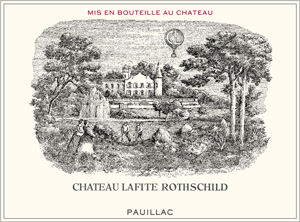| Region | |
|---|---|
| Subregion | France > Bordeaux > Left Bank > Pauillac |
| Colour | Red |
| Type | Still |

One of the fabulous surprises, although I had suggested last year that it could jump in quality, of my tastings, the 2006 Lafite Rothschild is a great, great wine made from a blend of 82% Cabernet Sauvignon, 16% Merlot, and 2% Petit Verdot. When I tasted it from barrel, it reminded me of their successful 1988, but it is dramatically superior to that vintage. Frankly, it may turn out to be as good as the 2005, which in all of Bordeaux is a far greater vintage than 2006. Lafite's severe selection process (42% made it into the grand vin) resulted in a full-bodied wine boasting an extraordinary perfume of charcoal, truffles, lead pencil shavings, and sensationally sweet, ripe black currant and cedar notes. A wine of extraordinary intensity, texture, and depth with silky tannins as well as awesome concentration, this has turned out to be a remarkable Lafite Rothschild that should be drinkable much earlier than the 2005, but age for three decades. Anticipated maturity: 2014-2035+.
The 2006 Château Lafite-Rothschild offers impressive fruit intensity on the nose, although it does not have the precision of the 2006 Mouton-Rothschild. Red berry fruits intermingle with rose petals and sous-bois scents - very typical Lafite bouquet where less can be more. The palate is medium-bodied with fine tannin and a keen line of acidity. It is certainly very well balanced with graphite-tinged black fruit, but whereas Mouton-Rothschild possesses that peacock's tail, Lafite remains linear. Nevertheless, the sophistication really comes through here. It is a Lafite-Rothschild that may spring a few surprises down the line, one of those wines that keeps drawing you back. Understated class.
Racy and long, with beautiful blackberry and light coffee character and a licorice undertone. Full and racy, with a long, long finish. Structured and powerful, yet builds on the palate. Close to 95-100.
40% of the harvest went into the grand vin. Late picked (26 Sep - 3 Oct for the Cabernet, which comprises 82% of the blend) but presumably it was viticulture that kept the grapes in such good nick. The Merlot was picked much earlier (16-22 September).
Less blue than Duhart with mid concentration. Very healthy opulent concentrated crimson. A particular spice to this vintage on the nose. Crisp and racy and beautifully balanced on the palate - possibly the most complete wine so far. Just caresses the palate and only on the finish shows you quite how much (notably ripe) tannin there is underneath. Remarkably compact. Lovely freshness without any greenness or angularity.
Good full ruby-red. Very ripe aromas of cassis, graphite and cedar chips, lifted by peppery and floral high notes. Densely packed and superconcentrated but light on its feet, with compelling flavors of spicy berries and minerals. The very long, slow-building finish stains the palate with flavor. Very backward but not austere; and unlike some recent vintages of Lafite, which could appear deceptively light in the early going, this showcases its density and ripeness from the outset. I have the impression that most of the less-ripe fruit was declassified into the far lighter Carruades de Lafite (87), which shows a distinctly cool style for the year.
Lafite’s Merlot harvest occurred between September 15-22, and the Cabernet Sauvignon from September 27 until the end of the first week of October. Only 42% of the production made it into the grand vin (a blend of 82% Cabernet Sauvignon, 16% Merlot, and 2% Petit Verdot). The 2006 is a tannic, restrained effort that brings to mind the 1988. A deep ruby/purple color is followed by sweet aromas of graphite, creme de cassis, spice, and subtle wood. Medium-bodied and richly fruity with decent acidity and a long finish, it will require 8-10 years of cellaring, and should keep for 4-5 decades.
Tasted at the château. A deep, almost opaque garnet core. The nose is extremely backward and stubbornly refuses to reveal its personality until five minutes of swirling. Then some ripe, pure blackberry and a touch of graphite and liquorish emerges. The palate is impenetrable at first, a mass of ripe Cabernet Sauvignon barring entry, but you can discern a bewitching symmetry and delineation. Not a flamboyant Lafite, one that I think will take 3 or 4-years to blossom. But it will. Tasted April 2007.